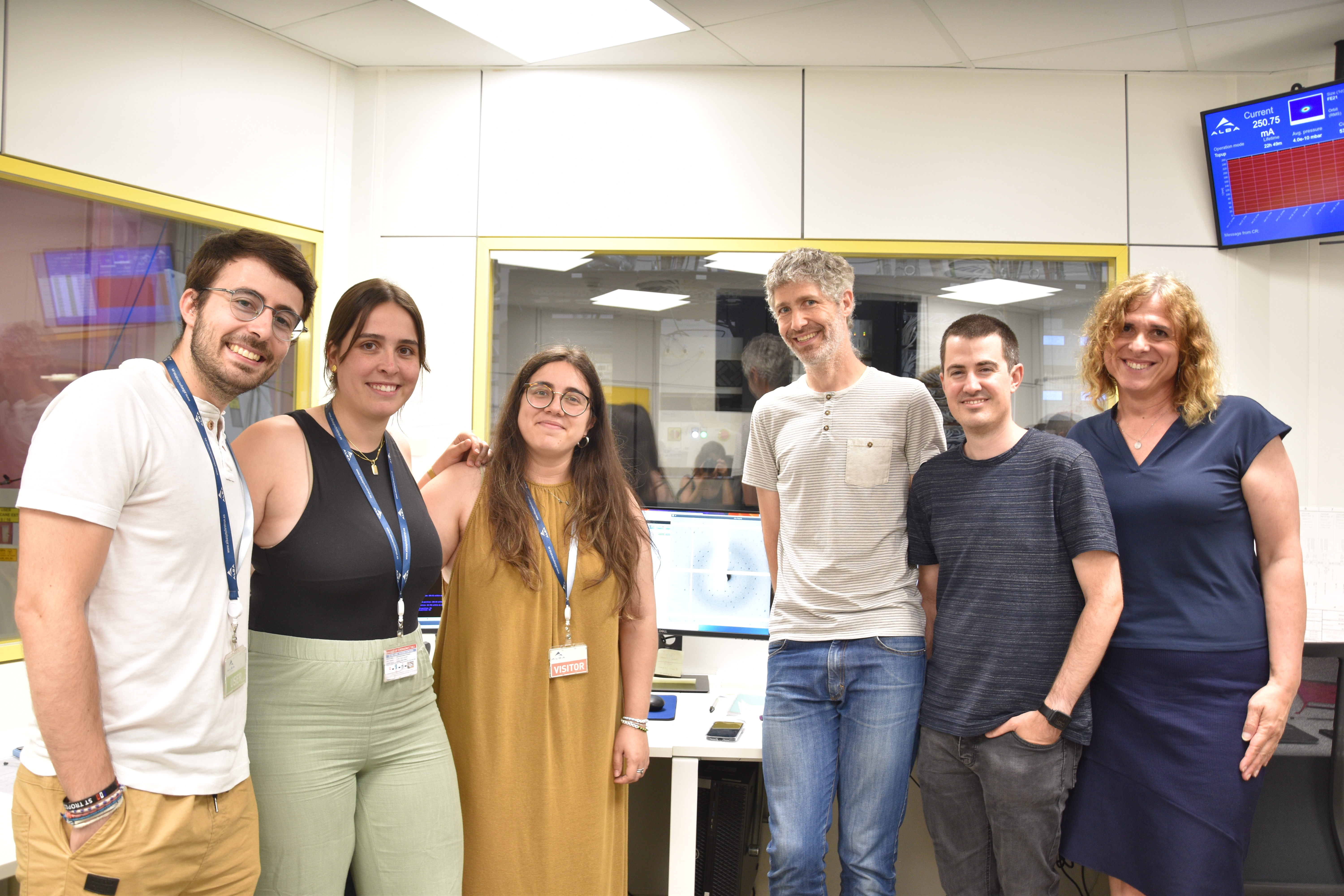ALBA Synchrotron

XAIRA hosted the first research group onsite, initiating the regular user operation. Researchers from Instituto de Química Física Blas Cabrera-CSIC operated the beamline and diffracted crystalline samples of various proteins involved in bacterial antibiotic resistance. The experiments, including their corresponding automated data analysis, were carried out successfully. XAIRA will receive research groups regularly, ramping up to full operation by next year, hence, becoming the 13th operative beamline of ALBA.
The new microfocus beamline XAIRA has been tuned up since the previous milestone in December 2024, when the first diffraction dataset from real sample was collected. June 18th 2025 marks the full launch of the beamline, as the first research group performed onsite experiments meeting the strict standards of advanced macromolecular crystallography (MX). XAIRA is dedicated to challenging MX experiments and novel techniques, supporting crystallography experiments on micron-sized or poorly-diffracting crystals, needles and plates, as well as native phasing and fixed-target serial crystallography experiments.
First users were Uxía Pérez, Alba Garay and Miguel Daniel Mozo, from Juan Hermoso’s group of the Instituto de Química Física Blas Cabrera (IQF-CSIC). The group has already published about 30 scientific articles in leading journals with data collected at XALOC, the successful MX beamline operating from day one at ALBA. This time, their project brings them to XAIRA to analyse a set of crystal samples of bacterial protein with the aim of better understand how bacteria protect themselves and resist antibiotics. Their work focuses on key proteins found on the surface of bacteria that help bacteria survive in hostile environments, cause disease and defend against viruses. This research could open the door to the discovery of new drugs and tools to fight infections caused by antibiotic-resistant bacteria.
To study these proteins, scientists used synchrotron light at XAIRA which enables them to determine the three-dimensional structure of proteins at atomic resolution. The beamline provided to the research group a reliable, state-of-the-art instrument, able to collect full datasets in tens of seconds, have the first data processing in less than one minute, and provide the full structure in less than one hour, thanks to the complete, GPU-based data processing pipelines.
After discovering a new way by which some bacteria such as MRSA (methicillin-resistant Staphylococcus aureus) evade antibiotics, the IQF-CSIC researchers are planning to explore how this resistance mechanism is activated, what other proteins are involved, and whether similar systems exist in other pathogenic bacteria and how they become resistant to beta-lactam antibiotics, one of the most widely used antibiotics.
After this successful launch, other research groups have also performed experiments at XAIRA. In the forecoming months, the beamline will combine weekly user operation with commissioning time to further improve the beam properties and implement the fixed-target serial crystallography capabilities. The size of the beam, currently 4x6 µm2, is expected to reach the nominal value of 3x1 µm2, and the flux will increase by a factor 10 at least with the implementation of a multilayer monochromator.
Importantly, XAIRA will be made compatible to operate in helium atmosphere early next year, so that the beamline can provide clean diffraction images from microcrystals with minimum background, benefitting the projects with poorly diffracting crystals. The helium environment will also provide optimal conditions for elemental characterization and anomalous phasing using long-wavelengths up to 3.54 Å (3.5 keV),
With the start of regular user operation, XAIRA marks a significant milestone in a long journey and is opening a new chapter of cutting-edge research at ALBA. The call for proposals of experiments to be performed in XAIRA and XALOC during year 2026, is currently open, until 4th September.